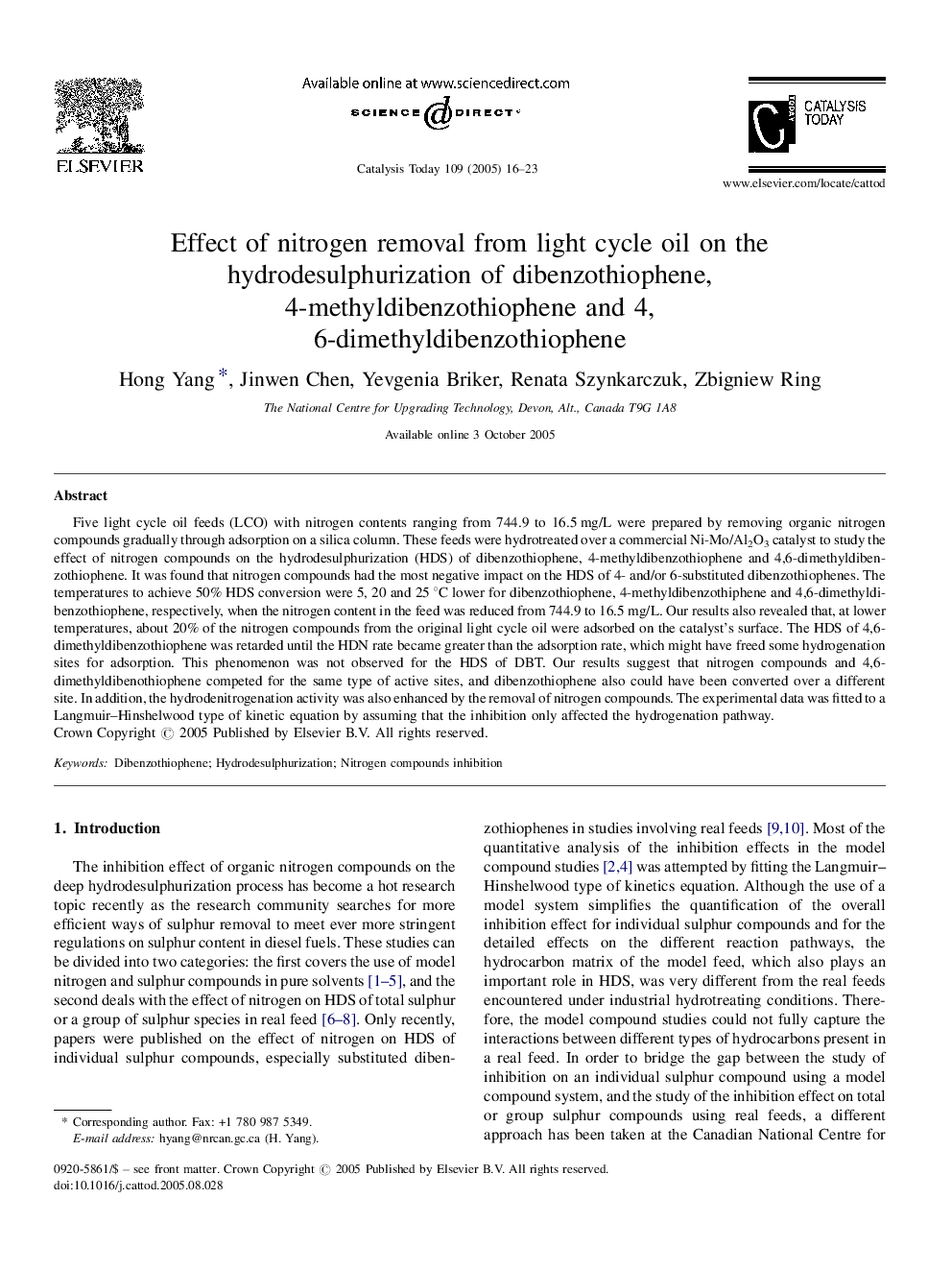| Article ID | Journal | Published Year | Pages | File Type |
|---|---|---|---|---|
| 9610133 | Catalysis Today | 2005 | 8 Pages |
Abstract
Five light cycle oil feeds (LCO) with nitrogen contents ranging from 744.9 to 16.5 mg/L were prepared by removing organic nitrogen compounds gradually through adsorption on a silica column. These feeds were hydrotreated over a commercial Ni-Mo/Al2O3 catalyst to study the effect of nitrogen compounds on the hydrodesulphurization (HDS) of dibenzothiophene, 4-methyldibenzothiophene and 4,6-dimethyldibenzothiophene. It was found that nitrogen compounds had the most negative impact on the HDS of 4- and/or 6-substituted dibenzothiophenes. The temperatures to achieve 50% HDS conversion were 5, 20 and 25 °C lower for dibenzothiophene, 4-methyldibenzothiphene and 4,6-dimethyldibenzothiophene, respectively, when the nitrogen content in the feed was reduced from 744.9 to 16.5 mg/L. Our results also revealed that, at lower temperatures, about 20% of the nitrogen compounds from the original light cycle oil were adsorbed on the catalyst's surface. The HDS of 4,6-dimethyldibenzothiophene was retarded until the HDN rate became greater than the adsorption rate, which might have freed some hydrogenation sites for adsorption. This phenomenon was not observed for the HDS of DBT. Our results suggest that nitrogen compounds and 4,6-dimethyldibenothiophene competed for the same type of active sites, and dibenzothiophene also could have been converted over a different site. In addition, the hydrodenitrogenation activity was also enhanced by the removal of nitrogen compounds. The experimental data was fitted to a Langmuir-Hinshelwood type of kinetic equation by assuming that the inhibition only affected the hydrogenation pathway.
Related Topics
Physical Sciences and Engineering
Chemical Engineering
Catalysis
Authors
Hong Yang, Jinwen Chen, Yevgenia Briker, Renata Szynkarczuk, Zbigniew Ring,
